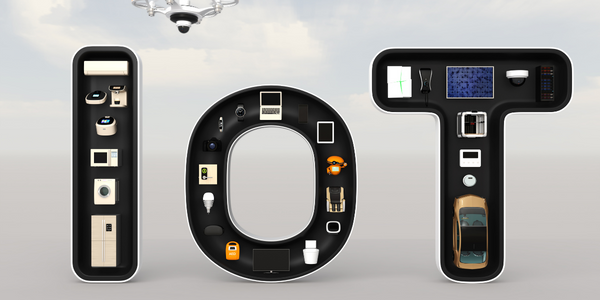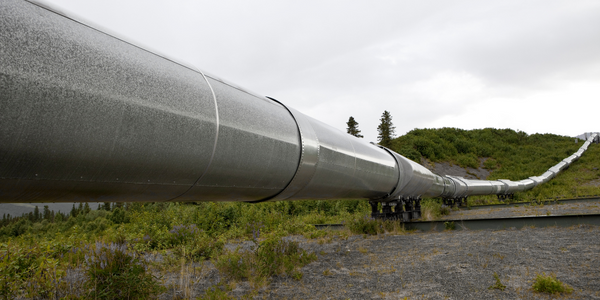Workforce Software's Transformation: From Traditional Leads-Based Strategy to Account-Based Approach

Technology Category
- Sensors - Autonomous Driving Sensors
Applicable Industries
- Equipment & Machinery
- Oil & Gas
Applicable Functions
- Human Resources
- Sales & Marketing
Use Cases
- Inventory Management
- Personnel Tracking & Monitoring
About The Customer
WorkForce Software is the first global provider of workforce management solutions with integrated employee experience capabilities. The company's WorkForce Suite adapts to each organization's needs, regardless of their unique pay rules, labor regulations, and schedules. It delivers a breakthrough employee experience at the time and place work happens. WorkForce Software is enterprise-grade and future-ready, helping some of the world's most innovative organizations optimize their workforce, protect against compliance risks, and increase employee engagement to unlock new potential for resiliency and optimal performance. The company caters to a diverse range of employees, including deskless or office workers, unionized, full-time, part-time, or seasonal workers, making managing a global workforce easy, less costly, and more rewarding for everyone.
The Challenge
WorkForce Software, a global provider of integrated employee experience and workforce management solutions, faced a significant challenge during the COVID-19 pandemic. Despite their rapid growth during this period, the company's go-to-market (GTM) strategy was traditional and leads-based, which was not creating the desired customer experience. The company had much of their content gated to gather leads and email addresses, which were then flooded with unsolicited content. This approach was not only intrusive but also ineffective in creating a positive customer experience. Furthermore, the company lacked the necessary data to properly target their customers and understand their position in the buyer journey. Their overall approach was too generic, and they lacked the tools to reach the right decision-makers.
The Solution
WorkForce Software decided to transform their GTM from a traditional leads-based strategy to an account-based approach. They utilized Demandbase One, a solution they already had in place, to its fullest potential. They identified their ideal customer profile (ICP) and aligned their resources around those companies. They also ungated all of their content, which not only improved the customer experience but also provided new insights into what their prospects were consuming. With Demandbase intent signals, they were able to understand where prospects were in the buying journey. They started targeting buyers by industry and buying stage, varying the content they offer as the buyer moves through the pipeline. They also replaced their previous sales intelligence/contacts vendor with Demandbase Sales Intelligence Cloud to ensure data accuracy and ease of finding the right contacts.
Operational Impact
Quantitative Benefit

Case Study missing?
Start adding your own!
Register with your work email and create a new case study profile for your business.
Related Case Studies.

Case Study
Smart Water Filtration Systems
Before working with Ayla Networks, Ozner was already using cloud connectivity to identify and solve water-filtration system malfunctions as well as to monitor filter cartridges for replacements.But, in June 2015, Ozner executives talked with Ayla about how the company might further improve its water systems with IoT technology. They liked what they heard from Ayla, but the executives needed to be sure that Ayla’s Agile IoT Platform provided the security and reliability Ozner required.

Case Study
IoT enabled Fleet Management with MindSphere
In view of growing competition, Gämmerler had a strong need to remain competitive via process optimization, reliability and gentle handling of printed products, even at highest press speeds. In addition, a digitalization initiative also included developing a key differentiation via data-driven services offers.

Case Study
Taking Oil and Gas Exploration to the Next Level
DownUnder GeoSolutions (DUG) wanted to increase computing performance by 5 to 10 times to improve seismic processing. The solution must build on current architecture software investments without sacrificing existing software and scale computing without scaling IT infrastructure costs.

Case Study
Predictive Maintenance for Industrial Chillers
For global leaders in the industrial chiller manufacturing, reliability of the entire production process is of the utmost importance. Chillers are refrigeration systems that produce ice water to provide cooling for a process or industrial application. One of those leaders sought a way to respond to asset performance issues, even before they occur. The intelligence to guarantee maximum reliability of cooling devices is embedded (pre-alarming). A pre-alarming phase means that the cooling device still works, but symptoms may appear, telling manufacturers that a failure is likely to occur in the near future. Chillers who are not internet connected at that moment, provide little insight in this pre-alarming phase.

Case Study
Premium Appliance Producer Innovates with Internet of Everything
Sub-Zero faced the largest product launch in the company’s history:It wanted to launch 60 new products as scheduled while simultaneously opening a new “greenfield” production facility, yet still adhering to stringent quality requirements and manage issues from new supply-chain partners. A the same time, it wanted to increase staff productivity time and collaboration while reducing travel and costs.







